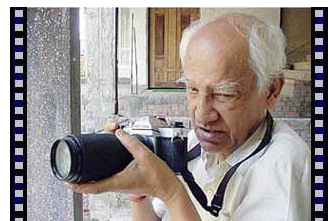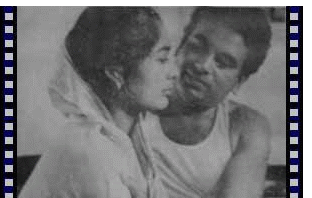At that time, his art of filmmaking was not appreciated by the audience of his state. There were some obvious reasons. His actors were from the stage. They were not skilled enough to essay roles in front of the camera. They could not free themselves from the rigidity or stereotyped patterns of stage acting. Therefore, his characters could not deliver flexibility in gestures. To help him in any technical aspect of the craft, no experienced assistant was available. And, above all, inadequate finance made him compromise with the shots of the film.
 In spite of all these loopholes, sensitive audiences of cinema outside his own region honoured his work. They, perhaps, could comprehend the director in him, who tried to introduce some innovative sequences through a powerful story of human existence. His imagination left no stone unturned to describe the intensity of suffering, every mood of human nature. He was Padum Baruah.
In spite of all these loopholes, sensitive audiences of cinema outside his own region honoured his work. They, perhaps, could comprehend the director in him, who tried to introduce some innovative sequences through a powerful story of human existence. His imagination left no stone unturned to describe the intensity of suffering, every mood of human nature. He was Padum Baruah.
With only one film – Ganga Chilonir Pakhi, Padum Baruah established his name in Assamese filmdom. The respectibility he bestowed on the Assamese films as a whole took time to be understood by the audience of his state. And afterwards, Ganga Chilonir Pakhi was recognised as the pioneer of film aesthetics in Assam. Padum Baruah is now remembered as the trail blazer in the domain of good, meaningful films. He did plan his second venture, named Erabarir Lesari, a story based on the same title by Dr. Lakshminandan Bora, but abandoned it at the manuscript state. He could not complete the film due to lack of finance. Padum Baruah breathed his last on July 26, 2006. The void created by his death would never be filled.
Though he was impresed by Satyajit Ray, while trying to portray the Assamese culture and in his attempts to bring it to focus, Padum Baruah’s mastery carried out technical styles that differed from Ray.
Padum Baruah was born in February 11, 1924 in Calcutta. From his very childhood, he was fascinated by the Hindi films made under the banners of Prabhat Studio and New Theatres. During his student days in Banaras Hindu University, Padum Baruah devoted himself completely to studying films and very often visited the cinema halls to enjoy films of Hollywood. Epic shots of classic films, their characterisations, the art of telling the story through camera– all began to germinate in him. The director in him emerged at that period.
He later on became close to stalwarts like Ritwik Ghatak, Mary Seton, etc. Such companions taught Baruah how a director needs to be detailed in telling a story. Social responsibility is a strong element associated with every art. Padum Baruah believed strongly in it. The aesthetic significance as well as the native essence in his craft forged a new path for Assamese cinema.
 Literature was an important subject of his film and he, with the best of his skills, incorporated all the folk elements of Assamese culture and literature within his craft. He even created the music on his own in Ganga Chilonir Pakhi.
Literature was an important subject of his film and he, with the best of his skills, incorporated all the folk elements of Assamese culture and literature within his craft. He even created the music on his own in Ganga Chilonir Pakhi.
Not only by making films, but also through organisational as well as academic activities, Padum Baruah contributed a lot to this art. On his own initiative, ‘Shillong Film Society’ was formed for the first time in the North-eastern region, making films of any language available for the audience of the region, Padum Baruah endeavoured to develop an aesthetic taste in the audience. His two books – Chalachitra Prasanga and Cinema Somporkio Bibhinna Alochona, are two outstanding contributions to the regional film genre.
Padum Baruah took steps to introduce film in the academic syllabi of the universities in the region. Garnering financial support to make creative films, trying to build a network among the film societies, applying for funds from the Government to implement these proposals, Padum Baruah always came forward with boundless zeal and enthusiasm.
The photographic basis of cinema seems to satisfy mankind. When a human being is placed before the camera, what is consequently projected on screen is plainly related to its human origin, but it is equally plainly not identical with it. A photograph of an object is not the object itself, but what we see in the photograph is surely the object photographed. Certainly it is far from easy to identity any specific respect in which the two differ. Hence the question – Is the humanity of the camera’s subject preserved or distorted or destroyed by its cinematic transcription? What, in short, becomes of human beings on film? At this juncture of time, such questions need definite answers for the well being of the craft. Padum Baruah, in his next film, planned to satisfy such queries.
Modernity, both in conception and practical mode, was his fundamental point. The bridge between imagination and reality evoked such questions in his mind. For all these, Padum Baruah deserves an honourable place in the history of Assamese film making.
